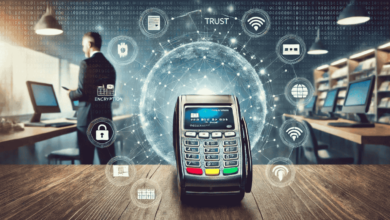How CMMC Policy Drives Cybersecurity Culture In Organizations

Data is the powerhouse holding diverse systems, departments, and business locations together. It allows your company to identify problems, determine the cause, and visualize robust solutions with long-term effects.
However, those working against your organization can also use data to initiate identity theft, sabotage, and system compromise, which leads to financial loss and reputational damage.
Reputation takes forever to build, and nobody wants to lose it within hours. Also, the legal consequences of noncompliance can impact your company’s progress and profitability. Thus, your organization must uphold minimum standards for protecting data and other digital assets.
That said, the U.S. Department of Defense initiated the Cybersecurity Maturity Model Certification (CMMC) to ensure a standard approach to achieving cybersecurity compliance.
CMMC policies help foster organizational cybersecurity culture in the following ways.
1. Helps Map Your Compliance Outlines
Many activities in your organization can generate Controlled Unclassified Information (CUI). Sharing emails and documents and interacting with third parties generates CUI data, including personal, financial, and critical data.
Adding NIST 800-171 templates into your CMMC guidelines facilitates the groundwork to create a durable cybersecurity framework. Organizations receive time-tested strategies for guarding Controlled Unclassified Information.
Furthermore, CMMC has frameworks to alert contractors to the criticality of diverse cybersecurity roles. Therefore, contractors can assign roles accordingly to ensure efficiency.
CMMC integrates with NIST 800-171 to address the ever-advancing cybersecurity menaces. Its guidelines are compatible with modern organizational stipulations and can integrate seamlessly with other cybersecurity guidelines to encourage open engagements.
You can uncover essential tips for enabling training, best cybersecurity practices, and awareness.
All in all, contractors can leverage these practices to implement long-standing strategies for managing and handling cybersecurity threats.
2. Leverages Third-Party Certification
Internal cybersecurity audits are integral routine checkpoints to determine your security posture. These audits offer a quick overview of your cybersecurity team and strategy. However, internal audits seldom give an objective and in-depth evaluation.
Thus, CMMC policies objectify cybersecurity evaluation and certification.
External cybersecurity auditors turn every stone in your organization, ensuring each department, location, and team meets minimal cybersecurity compliance standards. Third-party assessments are objective, leveraging the expertise and depth of the auditors to ensure accurate outcomes.
Leveraging the expertise of third-party cybersecurity auditors strengthens your organization’s defense, helping establish robust trust with stakeholders.
So, hire third-party auditors to establish the authority of your organization to meet the latest cybersecurity best practices and achieve unmatched security levels. Third-party auditors use CMMC guidelines to evaluate your compliance and certification. They check your organization to ensure it meets minimal compliance and security standards.
3. Enables Your Organization to Detect Threats on Time
Ongoing security monitoring and threat detection are part of effective CMMC 2.0 contractor compliance.
The cybersecurity sector is slippery, with criminals inventing new strategies and approaches. Your company will likely encounter more penetrative cyber threats in the future than now.
Considering that, CMMC encourages contractors to evolve with the advancing cyber threats. Achieving such a feat requires consistent monitoring to detect and address all security risks.
CMMC 2.0 encourages its beneficiaries to maintain robust certification and ongoing protection. They should train their team on external threats and system vulnerabilities that require timely attendance.
Implementing 24/7 cybersecurity monitoring prepares your organization to detect anomalous activities. As your teams detect these suspicious activities, they can protect your systems, data, and assets against unauthorized access and other threats. Ongoing monitoring also keeps your teams alert to identify and mitigate security lapses as they occur, preventing potential audit failures.
Furthermore, ongoing monitoring builds a solid protection wall around your business and operations. You can tell which part of the cybersecurity system has a leak that attackers can leverage. You also have a solid protection charm against everything you hold dear, including your workers, organizational assets, and data.
4. Establishment of Incident Response Plans
Contractors and subcontractors applying for contracts with the Department of Defense must never appear weak before the energy. They should have the capacity to address threats as they come.
CMMC introduces a series of practices and strategies contractors can use to respond to incidents. These practices can assist your organization in creating more actionable incident response procedures. Moreover, these procedures are integral tools for your cybersecurity team to address, report, and recover from cybersecurity breaches.
The pace at which your organization responds to incidents determines whether they will trigger legal and financial obligations or leave your compliance state unaltered.
Having said that, the CMMC framework provides the most robust incident response practices. It teaches the appropriate procedures for detecting breaches, isolating impacted systems, removing threats, and recovering from the incident. All these processes and related activities remain within CMMC reporting and compliance guidelines.
Your organization must be on par with the growing cybersecurity trends and system modifications. That sets your business ready to address incidents and resolve complicated issues.
In summary, CMMC lays the foundation for establishing a future-ready cybersecurity infrastructure. You develop systems and guidelines for safeguarding your company to the highest security levels.
5. Minimizes Legal and Financial Cybersecurity Pitfalls
Every cybersecurity attack targets an organization’s most precious asset—data. They want to steal your consumer’s data, financial information, or stakeholders’ data to use it against you.
Losing organizational data to cybercriminals can have penetrative and long-standing impacts. You lose money and resources trying to mitigate the incident. A damaged reputation from the incidents can make stakeholders and clients lose trust in your company.
CMMC 2.0 provides documented and actionable practices for companies to detect incidents before they occur. The cybersecurity framework offers guidelines for organizations to achieve robust protection against cyberattacks.
Your organization can leverage these practices to establish durable strategies for protecting against cyber incidents. Protective and incident response strategies enable your organization to withstand the harshest of cyberattacks.
Embracing CMMC is a timely decision for organizations that want to stay cybersecurity-compliant and optimize their organizational security.
Wrapping Up
Is your organization encountering more cyberattacks? Do you seek more robust strategies to optimize your cybersecurity posture?
Leverage the CMMC framework to prepare your organization to address, report, and recover from the mightiest cyber-attacks and threats. The framework provides in-depth guidelines to handle cyber threats and optimize cybersecurity operatives. It guides on effective cybersecurity auditing and how it can help your company comply to prevent risks. Furthermore, the framework offers tips for effective incident responses to maintain organizational efficiency.




